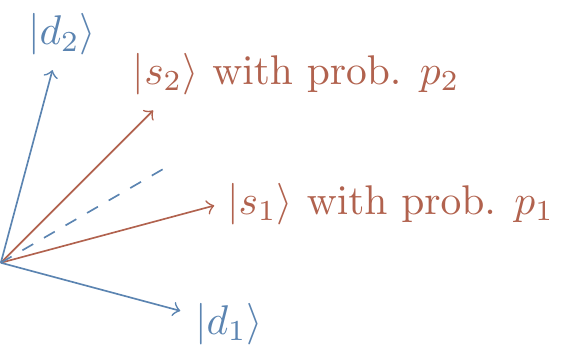4.12 Remarks and exercises
4.12.1 Projector?
Consider two unit vectors
4.12.2 Knowing the unknown
Suppose you are given a single qubit in some entirely unknown quantum state
Can you determine
|\psi\rangle , using as many measurements as you want?Say you measure the qubit in the standard basis, and register outcome
|0\rangle . What does this tell you about the pre-measurement state|\psi\rangle ?How many real parameters do you need to determine
|\psi\rangle ? Would you be able to100 reconstruct|\psi\rangle from\langle\psi|X|\psi\rangle ,\langle\psi|Y|\psi\rangle , and\langle\psi|Z|\psi\rangle ?You are given zillions of qubits, all prepared in the same quantum state
|\psi\rangle . How would you determine|\psi\rangle ?
4.12.3 Measurement and idempotents
The
Consider the measurement associated to any Hermitian operator
4.12.4 Unitary transformations of measurements
In our quantum circuits, unless specified otherwise, all measurements are assumed to be performed in the standard basis. This is because any measurement can be reduced to the standard measurement by performing some prior unitary transformation.
Show that101 any two orthonormal bases
\{|e_1\rangle,\ldots,|e_n\rangle\} and\{|d_1\rangle,\ldots,|d_n\rangle\} are always related by some unitaryU .Suppose that the projectors
P_k define the standard measurement. Show that, for any unitaryU , the projectorsUP_kU^\dagger also define a measurement.

4.12.5 Optimal measurement
The optimal measurement to distinguish between the two equally likely non-orthogonal signal states,

4.12.6 Alice knows what Bob did
Alice prepares a qubit in any state of her choosing and gives it to Bob, who secretly measures either
This is a simplified version of a beautiful quantum puzzle proposed in 1987 by Lev Vaidman, Yakir Aharonov, and David Z. Albert in a paper with the somewhat provocative title “How to ascertain the values of